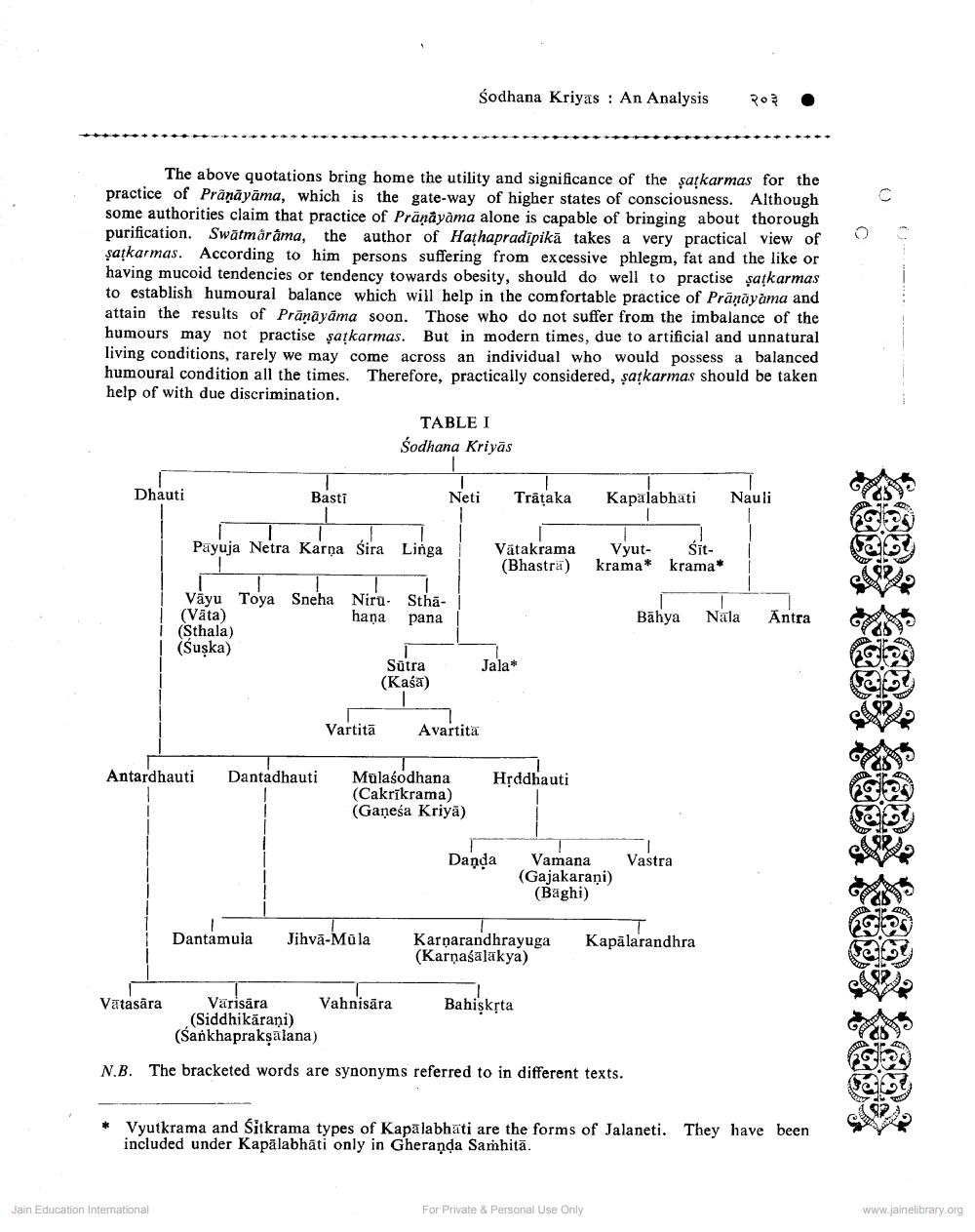Book Title: Shodhana Kriyas an Analysis Author(s): M L Gherore Publisher: Z_Pushkarmuni_Abhinandan_Granth_012012.pdf View full book textPage 3
________________ sodhana Kriyas : An Analysis Pos The above quotations bring home the utility and significance of the satkarmas for the practice of Prāņāyāma, which is the gate-way of higher states of consciousness. Although some authorities claim that practice of Pranayama alone is capable of bringing about thorough purification. Swätmârâma, the author of Hathapradipikä takes a very practical view of şarkarmas. According to him persons suffering from excessive phlegm, fat and the like or having mucoid tendencies or tendency towards obesity, should do well to practise şakarmas to establish humoural balance which will help in the comfortable practice of Prānāyama and attain the results of Prānāyāma soon. Those who do not suffer from the imbalance of the humours may not practise şakarmas. But in modern times, due to artificial and unnatural living conditions, rarely we may come across an individual who would possess a balanced humoural condition all the times. Therefore, practically considered, şarkarmas should be taken help of with due discrimination. TABLE I Šodhana Kriyās Dhauti Basti Neti Trățaka Kapalabhati Nauli Payuja Netra Karna Śira Vätakrama Linga Vyut- sit (Bhastra) krama* krama* Bāhya Nala Antra Vāyu Toya Sneha Niru Stha(Vata) hana pana (Sthala) (Suşka) Sutra (Kasa) Jala* Vartitā Avartitā Antardhauti Dantadhauti Hrddhauti Mulaśodhana (Cakrikrama) (Ganesa Kriya) Danda Vastra Vamana (Gajakarani) (Baghi) Dantamula Jihva-Müla Karmarandhrayuga (Karnaśalakya) Kapalarandhra Vatasara Värisära Vahnisāra Bahisksta (Siddhikārani) (Sankhapraksalana) N.B. The bracketed words are synonyms referred to in different texts. Vyutkrama and Sitkrama types of Kapalabhāti are the forms of Jalaneti. They have been included under Kapalabhāti only in Gheranda Samhitā. Jain Education International For Private & Personal Use Only www.jainelibrary.orgPage Navigation
1 2 3 4 5 6
